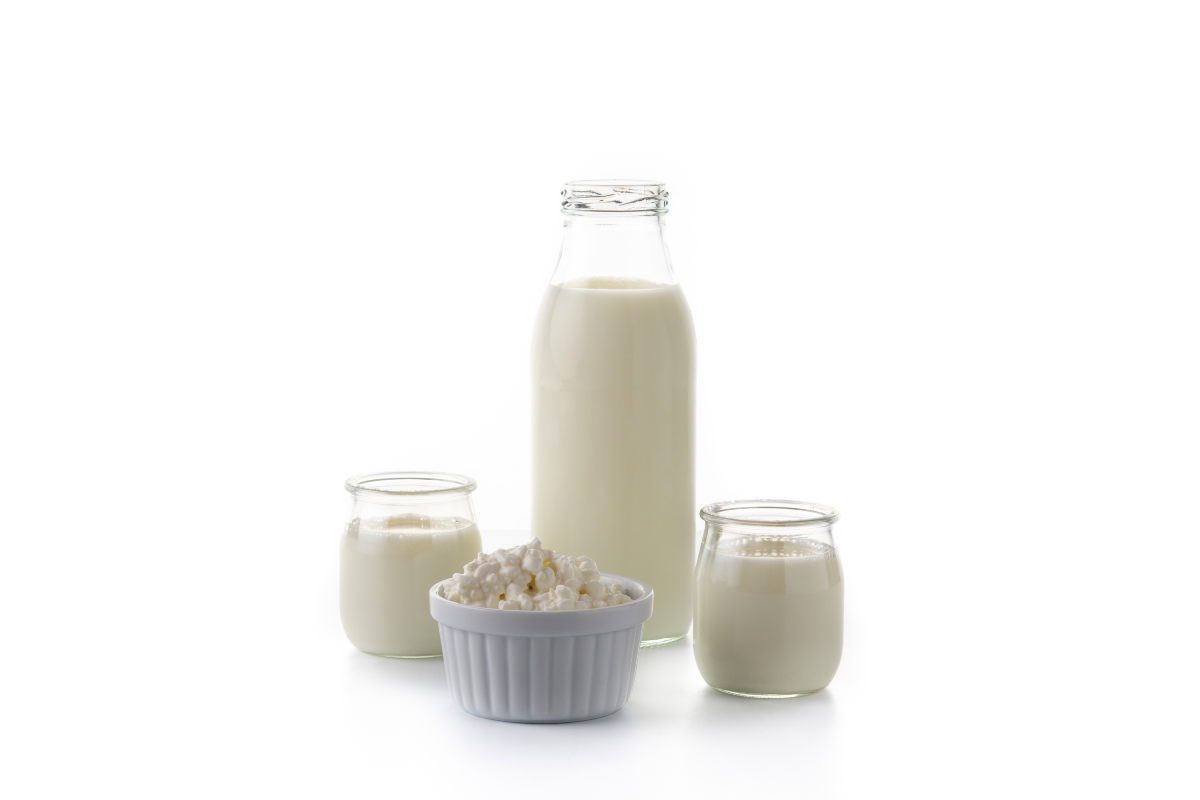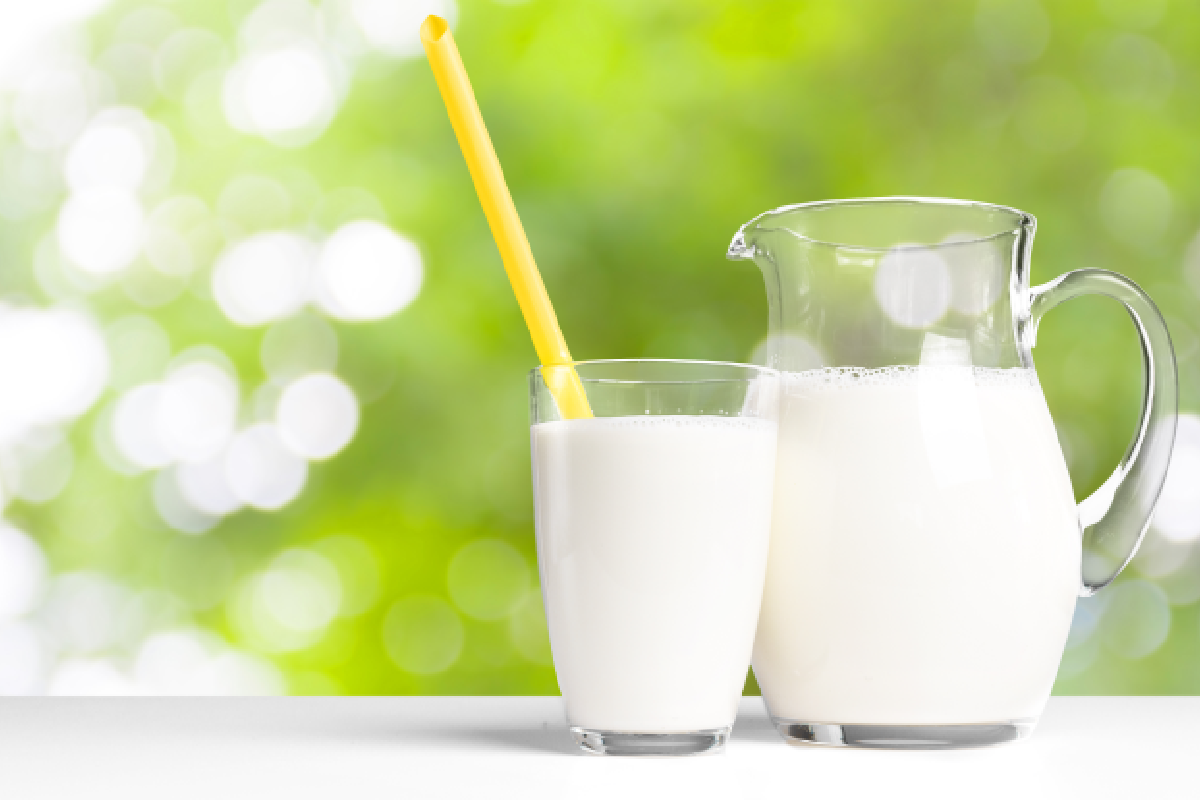Introduction to Buttermilk in Baking
Ah, buttermilk – that tangy, creamy marvel that works its magic in pancakes, biscuits, and cakes, making them oh-so-tender and delicious. It’s not just any ingredient; it’s a baker’s secret weapon. But what happens when you reach for that carton and find yourself staring into the void of your refrigerator? Can regular milk step into the spotlight and perform the same culinary magic as a buttermilk substitute?
Indeed, the quest to replace buttermilk with milk is not just about keeping your recipe on track; it’s a deep dive into the science of baking. Buttermilk’s tangy flavor and unique properties don’t just vanish into the mix; they play pivotal roles in texture and taste. Yet, sometimes, necessity breeds invention, and in the absence of buttermilk, milk, with a little ingenuity, can come to the rescue.
Now, before you throw in the towel or dash to the store, let’s ponder a moment. The solution could be sitting right in your kitchen. With a dash of lemon juice or vinegar, milk transforms, mimicking buttermilk’s acidity. But does this alchemy work across the board? Are there recipes where this switcheroo is undetectable, or perhaps, even preferable?
As we embark on this journey, we’ll uncover the secrets behind buttermilk’s charm, investigate how milk can stand in its place, and explore various alternatives that ensure your baking remains top-notch. Whether you’re a seasoned baker or a newbie in the kitchen, understanding these dairy dynamics can elevate your culinary creations, ensuring every bite is as delightful as intended.
So, buckle up, dear reader. We’re about to whisk away into the world of baking substitutions, where milk isn’t just milk—it’s a versatile performer ready to take on the role of buttermilk, with a little help from our kitchen chemistry. Let’s get stirring!
For more insight into adapting recipes
Understanding Buttermilk’s Role in Baking
Leavening Properties of Buttermilk
Dive into any baker’s recipe book, and you’ll likely find buttermilk starring in a range of delicious creations. This isn’t a fluke; buttermilk’s leavening properties are a baker’s dream. Thanks to its lactic acid, when buttermilk meets baking soda, they react like long-lost friends, producing carbon dioxide bubbles. These tiny bubbles are the secret to that airy, fluffy texture in pancakes and cakes. In essence, buttermilk is not just an ingredient; it’s a leavening agent, making baked goods rise and shine, quite literally.
Flavor and Texture Contributions
But that’s not all. Buttermilk brings more than just lift to the table; it packs a flavor punch and texture too. Its tangy taste is a result of the fermentation process, adding a nuanced depth to recipes that’s hard to replicate. Moreover, its acidity breaks down gluten strands in dough, tenderizing it, which is why buttermilk biscuits are the epitome of softness. This tenderizing effect, combined with its unique flavor, makes buttermilk a triple threat in baking: it leavens, flavors, and tenderizes, ensuring every bite is a delightful experience.
But here’s the rub: what if buttermilk’s not an option? Can milk, perhaps with a bit of culinary magic, fill these big shoes? Indeed, the quest to find a substitute is not just about mimicking buttermilk’s acidity; it’s about capturing its essence in both flavor and function. So, as we venture further into the world of substitutes, keep in mind that we’re not just looking for an alternative; we’re looking for a stand-in that can perform the same culinary ballet in our baking recipes.
Stay tuned as we delve into the chemistry of substituting milk for buttermilk, where science meets the art of baking, crafting solutions that keep our baked delights on the podium of perfection.
Curious about other buttermilk alternatives in cooking and baking? Don’t miss our “Ultimate Guide: Buttermilk Substitutes in Cooking & Baking”, a comprehensive resource for every home cook.
The Chemistry of Substituting Milk

Why Normal Milk May Not Work
At first glance, it might seem like milk could easily step in for buttermilk. After all, they’re both dairy, right? However, when we peek under the hood—or in this case, the lid—we uncover that the two are more like distant cousins than siblings. The crux of the matter lies in their acidity. Buttermilk’s lower pH, courtesy of its lactic acid, is a key player in baking, interacting with leavening agents to create that much-desired rise. Milk, sweet and less acidic, lacks this natural ability to tango with baking soda or baking powder in the same way.
Creating a Buttermilk Substitute with Milk
Don’t worry if you’re out of buttermilk. A dash of creativity turns plain milk into its twin. The secret? Add acid. Lemon juice or vinegar mixed with milk gets you close to buttermilk’s tang. This mix, called “soured milk,” is ready for baking.
This trick does more than mimic buttermilk’s chemistry. It keeps your dish’s essence. Soured milk might not match buttermilk’s flavor exactly. Yet, it helps cakes rise and pancakes stay fluffy.
Remember, milk isn’t a perfect buttermilk clone. But in the kitchen’s creative world, it’s a close match. Your baked goods will still impress. Keep exploring substitutes with flexibility and creativity. They can turn baking challenges into wins for flavor and texture.
explore “The Ultimate Guide to Making Fried Chicken without Buttermilk”, which delves into creative ways to achieve crispy, flavorful chicken without the classic ingredient.
Exploring Buttermilk Alternatives
When the baking aisle or your refrigerator leaves you hanging without buttermilk, several other dairy daredevils are ready to jump into the mix, each bringing their unique flair to your recipes.
Yogurt as a Substitute
Yogurt, with its creamy consistency and slight tang, is a front-runner in the substitution race. When thinned out with a bit of milk or water, it mirrors buttermilk’s acidity and thickness, making it a splendid choice for moist cakes and tender bread. Plus, its probiotic bonus adds a tiny health halo to your baked goods.
Using Sour Cream
Sour cream, another contender, packs a punch with its rich texture and tangy taste. Its heft and acidity can tenderize and moisten batters much like buttermilk. For a smoother consistency, a little milk or water can turn it into a buttermilk twin, ready to enrich your recipes with velvety goodness.
Kefir and Other Fermented Products
Kefir, the liquidy cousin of yogurt, brings a bubbly personality to the table. Its fermented nature and mild tanginess can closely mimic buttermilk’s leavening and flavor-enhancing properties. It’s particularly suited for lighter, airier textures, giving pancakes and cakes a lift that’s hard to beat.
Non-Dairy Alternatives
For those venturing into the realm of plant-based baking, fear not. Coconut milk mixed with an acid, or almond milk with a touch of lemon juice, can step in as non-dairy knights in shining armor. While the flavor profile may shift slightly, these alternatives ensure everyone can enjoy baking’s joy, regardless of dietary preferences.
Exploring buttermilk alternatives isn’t just about finding a substitute; it’s about embarking on a culinary adventure, discovering new flavors and textures that can elevate your baking. Whether you opt for yogurt, sour cream, kefir, or a non-dairy option, each brings its unique character to your creations, ensuring that even without buttermilk, your baking remains nothing short of spectacular.
Tested Recipes: Buttermilk vs. Milk

Embarking on a culinary experiment, we ventured to answer the age-old question: Can milk truly replace buttermilk in baking? To find out, we rolled up our sleeves and tested two beloved recipes, pancakes and cakes, using both buttermilk and our milk substitute.
Pancakes with Milk vs. Buttermilk
First up, the classic pancake. Known for its fluffy texture and golden exterior, the pancake is a true test of leavening and flavor. With buttermilk in the batter, pancakes rise to the occasion, boasting a light and airy texture with a slight tanginess that tickles the palate. On the flip side, pancakes made with milk and a touch of vinegar or lemon juice to mimic buttermilk’s acidity presented a fascinating case. They were surprisingly fluffy, with a subtle richness and a barely noticeable difference in tang. While buttermilk pancakes held a slight edge in flavor complexity, the milk substitute pancakes were a triumph, proving that in a pinch, milk can indeed hold its own.
Baking Cakes with Substitutes
Next, the humble cake, a beacon of texture and moistness. Buttermilk cakes are celebrated for their tender crumb and slight tang, attributes that elevate simple flavors to sublime. Our experiment with a milk substitute sought to preserve these qualities. The result? A cake that stood proudly, with a crumb just as tender and a moistness that rivaled its buttermilk counterpart. Though the nuanced tang of buttermilk was more subdued, the cake was undeniably delicious, adorned with a richness that sang through each bite.
These kitchen experiments underscored a pivotal culinary lesson: while buttermilk may be the baker’s gold standard, milk, when cleverly acidified, emerges as a sterling silver substitute. It invites bakers into a world of adaptability, proving that with a dash of creativity, even the most steadfast baking traditions can embrace a little flexibility.
How to Make Your Own Buttermilk Substitute
Finding yourself in a baking bind without buttermilk calls for a bit of kitchen wizardry. Luckily, conjuring up a buttermilk substitute is easier than you might think, with common ingredients that are likely already in your pantry or fridge.
Using Lemon Juice or Vinegar
The most popular method involves just two ingredients: milk and an acid, typically lemon juice or white vinegar. By adding one tablespoon of either lemon juice or vinegar to a cup of milk, you create a concoction that closely mimics the acidity and curdling effect of buttermilk. Stir the mixture and let it stand for about five to ten minutes. As it sits, the milk thickens slightly and takes on a tangy flavor, transforming into a ready-to-use buttermilk substitute. This simple alchemy not only saves a trip to the store but also ensures your baked goods still rise to the occasion with the desired texture and taste.
Other Acidic Additives
If you find yourself without lemon juice or vinegar, other acidic substances can perform the transformation. Cream of tartar, a staple in many bakers’ cupboards, can also acidify milk. Mixing 1.5 teaspoons of cream of tartar with one cup of milk yields a similar result. Another option, though less common, involves kefir or plain yogurt diluted with water to match the consistency of buttermilk. These alternatives expand the realm of possibilities, ensuring that the absence of buttermilk never hinders your baking aspirations.
Creating a buttermilk substitute is not just about mimicry; it’s a testament to culinary flexibility and ingenuity. By understanding the underlying principles of buttermilk’s role in baking, you can navigate substitutions with confidence, ensuring your cakes, pancakes, and bread retain their delightful textures and flavors, even when the original script calls for an ingredient swap. So, next time buttermilk is missing from your fridge, remember: a little acid and milk can work wonders, keeping your baking adventures on track.
When to Use Milk and When to Stick with Buttermilk
Final Verdict and Best Practices
Navigating the dairy aisle of your culinary endeavors, you’ve likely pondered when to faithfully stick with buttermilk and when it’s safe to opt for a milk substitute. The answer, like many things in the baking world, is nuanced, hinging on the desired outcome of your recipe.
The Unmatched Qualities of Buttermilk
Buttermilk, with its acidic nature and rich history in baking, offers unparalleled tenderness and a distinct tangy flavor that can elevate recipes from good to extraordinary. Its unique composition interacts with leavening agents to produce light, airy textures and a subtle complexity in flavor that’s hard to replicate.
Embracing Adaptation with Milk Substitutes
However, the culinary world thrives on adaptation and innovation. In scenarios where buttermilk is unavailable or you’re catering to specific dietary needs, milk—acidified with lemon juice or vinegar—emerges as a formidable stand-in. This substitute is particularly effective in recipes where buttermilk’s role is primarily as a leavening agent, contributing to the rise and texture of baked goods.
Choosing Between Buttermilk and Substitutes
When buttermilk’s tangy taste is key, like in traditional pancakes or certain cakes, using it may be best. This choice helps maintain the intended flavor profile. However, in many recipes, the difference between buttermilk and its substitute is subtle. Often, it’s undetectable except to very discerning palates.
Ultimately, the choice between buttermilk or a substitute hinges on your baking needs, ingredient availability, and taste preferences. By embracing flexibility without losing quality, bakers can ensure delicious results every time.
Remember, baking blends art and science. Every ingredient contributes to the flavors and textures we love. Understanding how these elements interact allows you to make informed kitchen decisions. This way, each baking project can become a masterpiece of culinary creativity.
FAQs
Can you substitute milk for buttermilk in all recipes?
Absolutely, you can substitute milk for buttermilk in most recipes by adding an acid like lemon juice or vinegar to milk. This adjustment works well for baked goods where buttermilk’s acidity and tanginess are key for texture and flavor. However, keep in mind that for recipes where buttermilk’s unique flavor is central, using real buttermilk might yield the best results.
What adjustments should be made when using milk instead of buttermilk?
To substitute milk for buttermilk, mix 1 tablespoon of lemon juice or white vinegar with 1 cup of milk and let it sit for about 5-10 minutes until slightly curdled. This mixture can be used as a 1:1 substitute for buttermilk. The slight adjustments in flavor and acidity levels can be balanced in most recipes, ensuring delicious outcomes.
How does the taste differ when using milk instead of buttermilk?
Using milk with an acid to substitute buttermilk can slightly alter the taste of your baked goods. Buttermilk’s distinct tangy flavor might be less pronounced, but the overall taste remains delicious and satisfying. For recipes where buttermilk’s tang is crucial, consider adjusting other flavoring elements to compensate.
Is there a non-dairy substitute for buttermilk?
Yes, for a non-dairy buttermilk substitute, mix 1 tablespoon of lemon juice or vinegar with 1 cup of soy milk, almond milk, or any plant-based milk of your choice. Let the mixture sit for a few minutes to thicken and curdle slightly before using. This provides a vegan-friendly option that still offers the acidity needed for baking.
Can I use powdered buttermilk as a substitute for liquid buttermilk?
Powdered buttermilk can indeed be used as a convenient substitute for liquid buttermilk. Follow the package instructions to reconstitute the powder with water, which then can be used in your recipes just like liquid buttermilk. This option is especially handy for those who don’t regularly use buttermilk and prefer a longer-lasting alternative.

